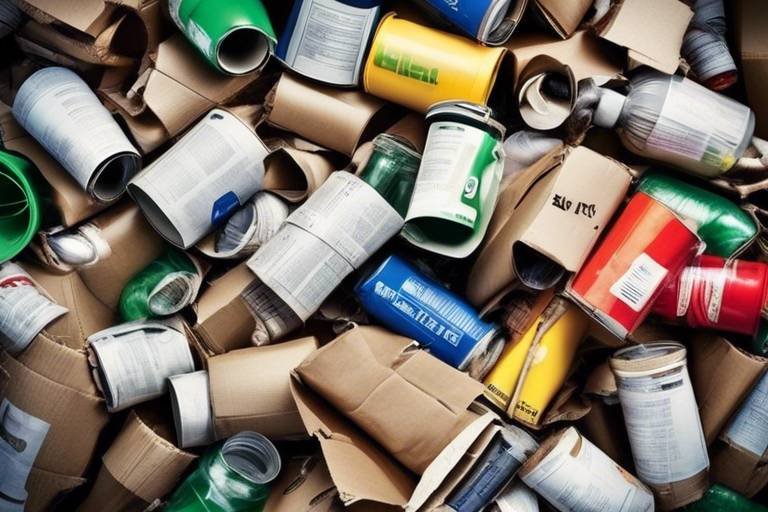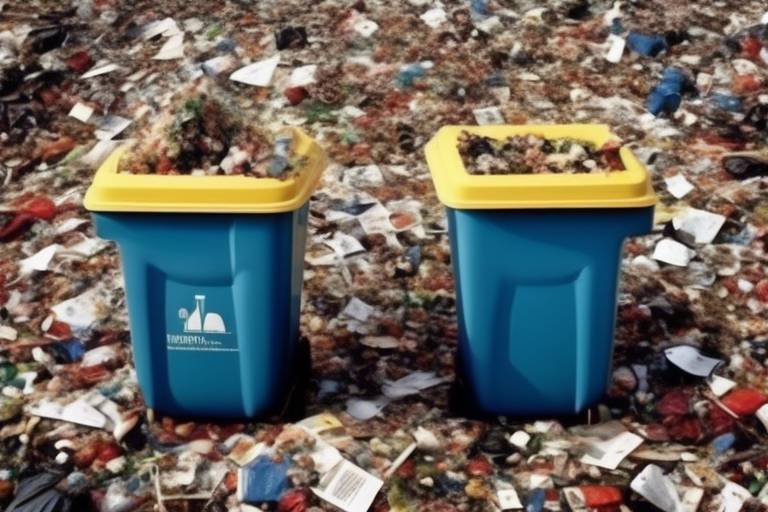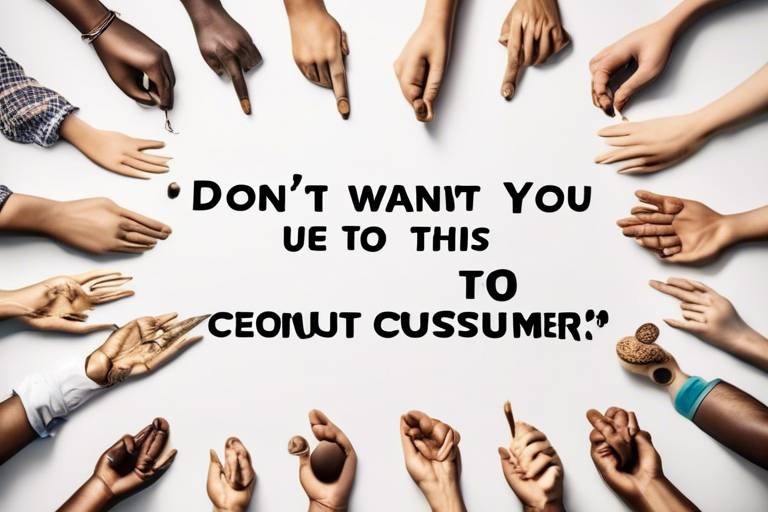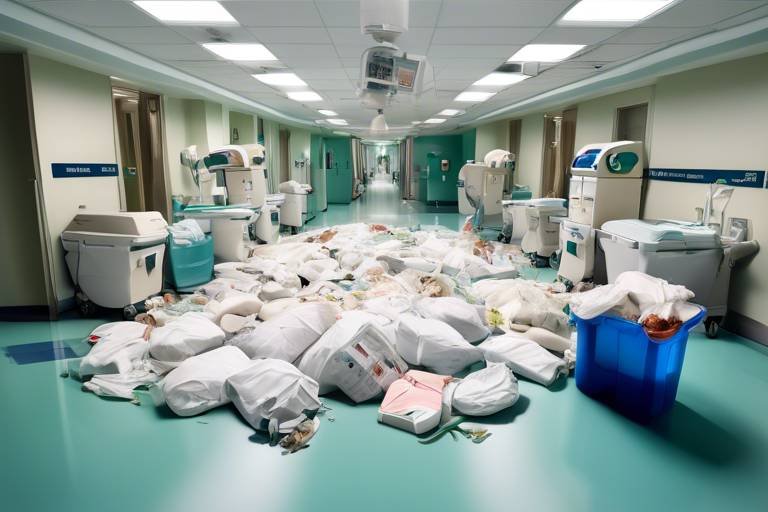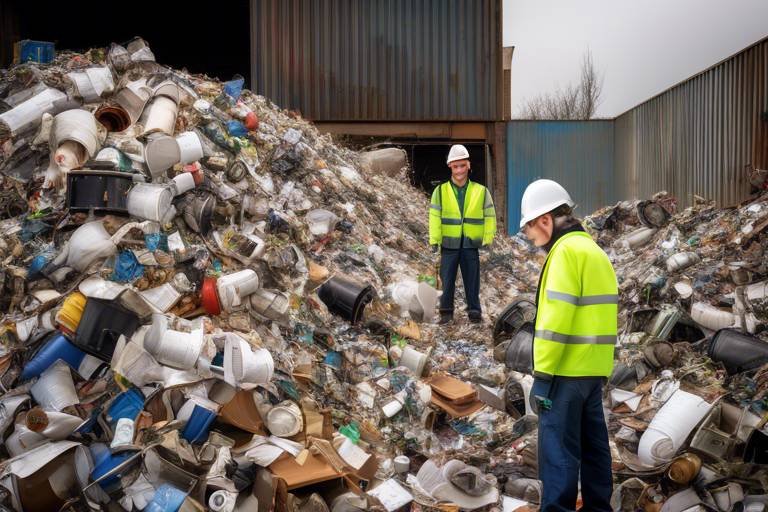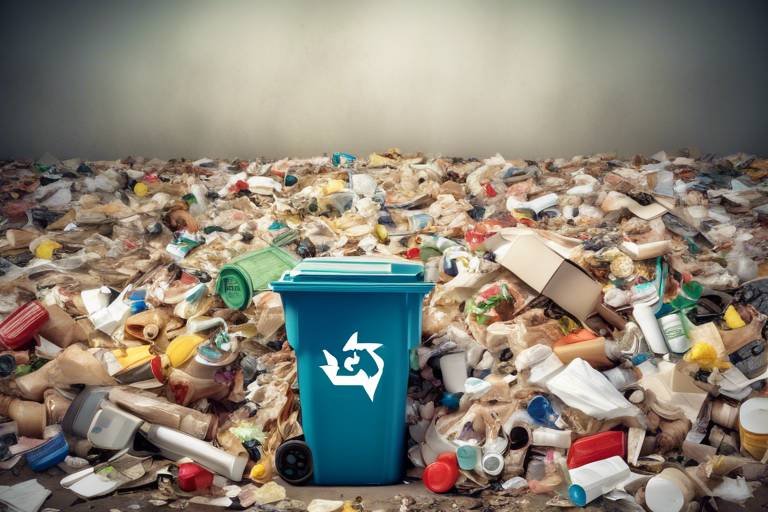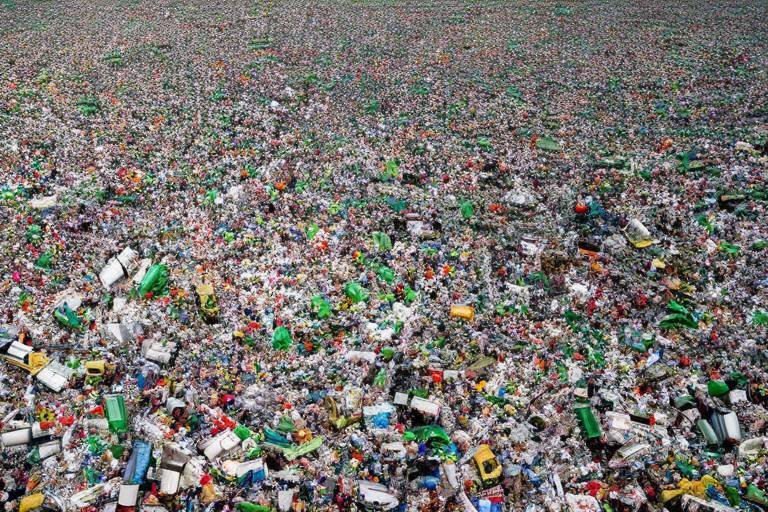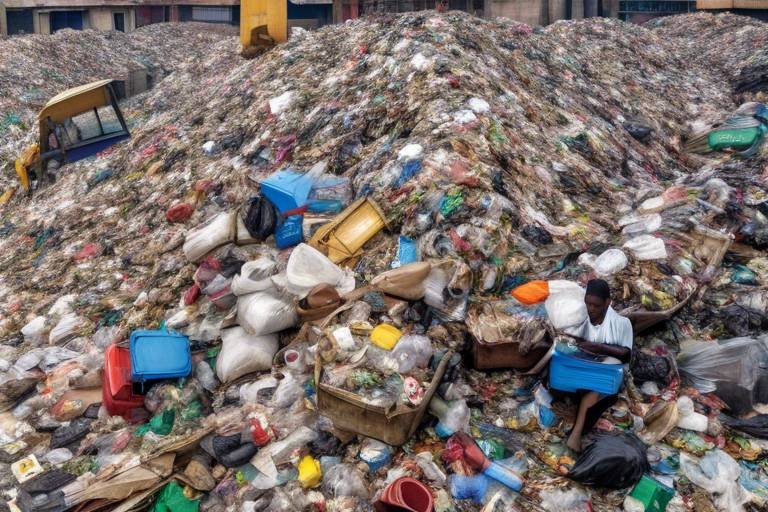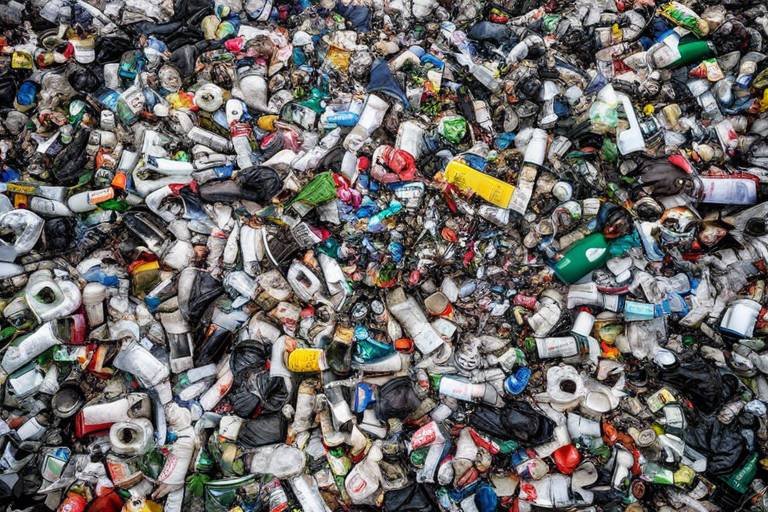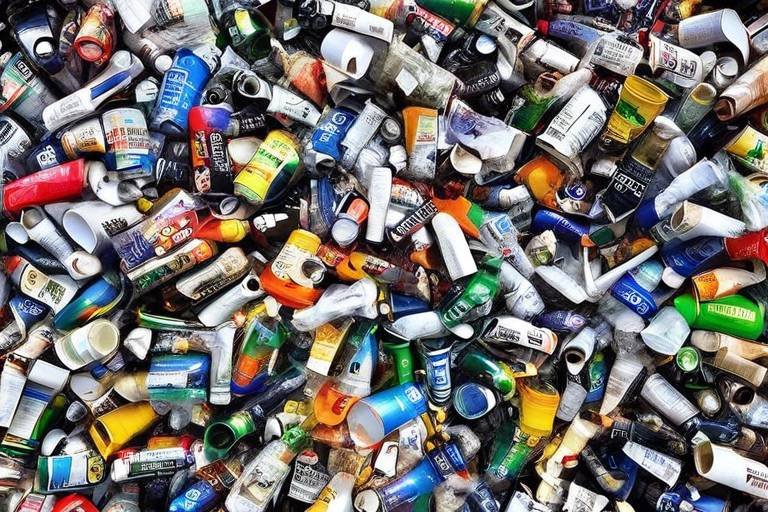Are Plastic Straws Really That Bad for the Environment?
When you think about plastic pollution, what comes to mind? Maybe you picture a vast ocean filled with floating debris or a beach littered with trash. But did you know that something as seemingly innocuous as a plastic straw can contribute significantly to this growing problem? Plastic straws have become a symbol of environmental waste, and for good reason. They are small, lightweight, and often used just once before being discarded, making them easy to overlook in the grand scheme of plastic pollution. However, their impact on our environment is anything but negligible.
Every year, billions of plastic straws are used around the world. They may seem harmless, but these little tubes can have devastating effects on wildlife and ecosystems. Imagine a sea turtle mistaking a straw for food or a bird getting entangled in one. It's these kinds of scenarios that highlight the urgency of addressing plastic straw usage. The truth is, our love for convenience has led to a serious environmental crisis, and it's essential to recognize that every small action counts. By understanding the impact of plastic straws, we can begin to make informed choices that benefit the planet.
But why are plastic straws such a big deal? To put it simply, they are a part of the larger problem of plastic waste. According to recent studies, plastic straws are among the top ten items found during coastal cleanups. This statistic alone should make us question our reliance on them. The reality is that plastic straws take hundreds of years to decompose, and even then, they break down into microplastics that can enter our food chain. So, the question remains: are we willing to sacrifice our environment for the sake of convenience?
As we delve deeper into this issue, we must also consider the alternatives available to us. From biodegradable straws made from plant materials to reusable options crafted from metal or silicone, there are numerous ways to enjoy our beverages without harming the environment. It's all about making a conscious choice. By opting for sustainable alternatives, we can significantly reduce our plastic footprint and promote a healthier planet.
In conclusion, while plastic straws may seem insignificant in the grand scheme of plastic pollution, their impact is far-reaching. As consumers, we have the power to influence change by choosing alternatives and supporting legislation aimed at reducing plastic waste. Every small step we take can lead to a significant difference in protecting our environment for future generations. So next time you reach for a straw, ask yourself: is this really necessary?
- What are the environmental impacts of plastic straws? Plastic straws contribute to pollution, harm marine life, and take hundreds of years to decompose.
- Are there sustainable alternatives to plastic straws? Yes, options include biodegradable, metal, bamboo, and silicone straws.
- How can legislation help reduce plastic straw usage? Many regions are implementing bans or restrictions, which can change consumer behavior and industry practices.
- What can individuals do to help? Raising awareness, choosing alternatives, and supporting eco-friendly initiatives are great ways to contribute.

The Environmental Impact of Plastic Straws
When you sip your favorite drink, have you ever stopped to think about the environmental impact of that simple plastic straw? It might seem trivial, but plastic straws are a significant contributor to the growing issue of plastic pollution in our oceans and landfills. In fact, it is estimated that billions of plastic straws are used every day, with a staggering number ending up in our natural environments. This is not just an eyesore; it has dire consequences for wildlife and ecosystems.
The majority of plastic straws are made from polypropylene, a type of plastic that is not biodegradable. Instead, these straws can take hundreds of years to decompose, breaking down into smaller microplastics that contaminate the soil and water. This leads to a domino effect where marine creatures mistake these tiny particles for food, resulting in ingestion that can cause malnutrition, digestive blockages, or even death. It's a heartbreaking reality, and it raises the question: is convenience worth the cost of our planet?
Moreover, the production of plastic straws contributes to greenhouse gas emissions. The manufacturing process not only requires energy but also releases pollutants into the atmosphere. This means that every time you use a plastic straw, you're not just contributing to waste; you're also playing a part in a larger cycle of environmental degradation. We must consider the full lifecycle of plastic products, from production to disposal, to fully grasp their impact.
In addition to harming wildlife, plastic straws also contribute to the larger problem of marine debris. According to the Ocean Conservancy, straws and stirrers rank among the top 10 items collected during coastal cleanups. This indicates a clear need for action. By recognizing the impact of plastic straws, we can begin to advocate for change, both personally and on a broader scale.
So, what can we do about this? First, we need to acknowledge the role of consumer behavior. By reducing our personal use of plastic straws, we can collectively make a significant difference. This can be as simple as choosing to go without a straw or opting for reusable alternatives made from materials like stainless steel, glass, or bamboo. By making these conscious choices, we can help alleviate the burden of plastic waste on our environment.
In conclusion, the environmental impact of plastic straws is profound and multifaceted. From their contribution to pollution and greenhouse gas emissions to their direct threat to marine life, the case against plastic straws is compelling. As we continue to explore alternatives and advocate for change, we must remain aware of our individual choices and their wider implications for the planet.

Statistics on Plastic Straw Usage
The statistics surrounding plastic straw usage are nothing short of alarming. Did you know that over 500 million plastic straws are used in the United States every single day? That's enough straws to fill over 125 school buses each year! This staggering number highlights the sheer volume of plastic waste generated by something as seemingly innocuous as a straw.
When we dive deeper into the numbers, we find that these straws contribute to the broader plastic pollution crisis. According to a report by the Ocean Conservancy, plastic straws rank among the top ten items collected during beach cleanups. This statistic emphasizes not only how frequently they are discarded but also their persistent presence in our oceans and waterways. The problem is compounded by the fact that straws are often used once and then thrown away, leading to a cycle of waste that is difficult to break.
It's also crucial to consider the global perspective. Worldwide, it is estimated that over 1 billion plastic straws are used annually. This consumption is not just a problem in developed countries; emerging economies are also adopting the convenience of plastic straws, further exacerbating the issue. The following table illustrates the staggering figures regarding plastic straw usage across different regions:
| Region | Estimated Daily Usage (in millions) |
|---|---|
| United States | 500 |
| Europe | 300 |
| Asia | 700 |
| Rest of the World | 400 |
These numbers underscore the urgent need for behavioral change. If we continue at this pace, the environmental impact will be catastrophic. As consumers, we hold the power to influence this trend. By opting for alternatives, we can collectively reduce the demand for plastic straws. Education and awareness are key in this endeavor. When consumers understand the implications of their choices, they are more likely to make informed decisions that benefit the planet.
So, what can we do about it? Next time you're at a café or restaurant, consider refusing that plastic straw. By doing so, you’re not just saving a single straw from ending up in a landfill or the ocean; you're also sending a message to businesses that consumers care about sustainability. A small shift in our daily habits can lead to significant changes over time.
In conclusion, the statistics surrounding plastic straw usage are a wake-up call. They reveal not just the scale of the problem but also the potential for change. By being conscious of our choices and advocating for sustainable alternatives, we can help turn the tide against plastic pollution.
- Why are plastic straws so harmful to the environment? Plastic straws contribute to pollution and can harm marine life when they end up in oceans and waterways.
- What are some alternatives to plastic straws? Alternatives include paper straws, metal straws, and bamboo straws, which are more environmentally friendly.
- How can I encourage businesses to stop using plastic straws? You can raise awareness, refuse plastic straws when ordering, and support businesses that offer sustainable alternatives.

Alternatives to Plastic Straws
As we dive deeper into the quest for sustainability, it's essential to explore the myriad of . With the growing awareness of the environmental impact of plastic pollution, many individuals and businesses are looking for solutions that don't compromise convenience. Thankfully, there are several viable options that can help us sip our favorite drinks without harming the planet.
One of the most popular alternatives is the metal straw. Made from stainless steel, these straws are not only durable but also easy to clean and reusable. Imagine having a sleek, shiny straw that you can take anywhere! They often come with a cleaning brush, making maintenance a breeze. However, it's crucial to note that they can get hot or cold depending on the beverage, so a little caution is needed when sipping.
Another fantastic option is the bamboo straw. These straws are 100% natural and biodegradable, offering a rustic charm that many people love. Using bamboo straws can be likened to drinking from nature itself! They're lightweight, easy to carry, and add a unique touch to your drinks. Plus, they come in different sizes, making them suitable for various beverages.
For those who prefer a more flexible option, silicone straws are a great choice. These straws are soft, reusable, and come in vibrant colors that can brighten up any drink. They're particularly popular among families with young children, as they are safe and won't cause any injury. Silicone straws can be easily cleaned in the dishwasher, making them a practical choice for busy households.
And let's not forget about paper straws. While they may not be as durable as other options, they are a great single-use alternative that decomposes much faster than plastic. Many cafés and restaurants are making the switch to paper straws, providing an eco-friendly option for customers. However, they do have a tendency to become soggy if left in a drink for too long, so they’re best used for quick sips.
Lastly, there are edible straws that are gaining popularity. Made from various food ingredients, these straws not only serve their purpose but can also be eaten after use! Imagine sipping your smoothie through a straw that you can munch on afterward—it's like a two-in-one treat! Edible straws are a fun and innovative solution, especially for events and parties.
In summary, the alternatives to plastic straws are as diverse as they are sustainable. By choosing options like metal, bamboo, silicone, paper, or even edible straws, we can significantly reduce our plastic footprint. As consumers, embracing these alternatives is not just a trend; it's a necessary step towards protecting our environment. So, the next time you reach for a straw, consider making a choice that benefits both you and the planet!
- Are metal straws safe to use? Yes, metal straws are safe as long as they are made from food-grade stainless steel.
- Can bamboo straws be reused? Yes, bamboo straws can be reused multiple times, but they should be cleaned properly between uses.
- Do paper straws hold up in drinks? Paper straws are designed for short-term use and may become soggy if left in a drink for too long.
- Are edible straws available everywhere? Edible straws are still relatively new and may not be available in all locations, but they are becoming more popular.

The Role of Legislation
When it comes to tackling the issue of plastic straws and their environmental impact, legislation plays a pivotal role. Governments around the world are beginning to recognize the urgency of the situation, and they are stepping up to implement measures that can significantly reduce plastic waste. Have you ever wondered how laws can influence consumer behavior? Well, they do so by creating a framework that encourages or even mandates change. For instance, many regions have started to ban single-use plastic straws, which not only reduces the number of straws entering landfills and oceans but also raises awareness about the broader issue of plastic pollution.
These legislative actions often come in the form of bans or restrictions on the sale and distribution of plastic straws. California, for example, was one of the first states to implement a statewide ban on plastic straws, and this has inspired other states and countries to follow suit. Such laws not only aim to curb the usage of plastic straws but also promote the adoption of more sustainable alternatives. It’s like planting a seed that can grow into a forest of eco-friendly practices!
Moreover, legislation can have a ripple effect on businesses. When a law is passed, companies often feel the pressure to adapt to the new regulations. This can lead to significant changes in their practices, such as switching to biodegradable straws or offering reusable options. In fact, many businesses have reported a surge in customer support after transitioning away from plastic straws, proving that consumers are increasingly valuing sustainability in their purchasing decisions.
However, legislation alone isn't enough. It must be coupled with public awareness campaigns that educate consumers about the reasons for these changes. The more people understand the impact of plastic straws on the environment, the more likely they are to support such laws and make informed choices. This is where the power of community comes into play. When people rally together for a cause, they can create a significant impact, influencing lawmakers to take action.
In conclusion, while legislation is a crucial component in the fight against plastic pollution, it works best when combined with consumer awareness and corporate responsibility. By creating a legal framework that encourages sustainable practices, we can pave the way for a cleaner, healthier planet. So, the next time you sip your drink, consider the journey of that straw and the role we all play in shaping a more sustainable future.
- What are the main goals of plastic straw legislation? The primary goals are to reduce plastic waste, protect marine life, and encourage the use of sustainable alternatives.
- Are there any penalties for businesses that violate plastic straw bans? Yes, many regions impose fines or other penalties on businesses that fail to comply with these regulations.
- What alternatives to plastic straws are being promoted? Alternatives include biodegradable straws made from materials like paper or bamboo, as well as reusable straws made from metal or silicone.

Consumer Awareness and Education
In today's world, where every action we take can ripple through the environment, consumer awareness is more crucial than ever. The impact of plastic straws on our planet is not just a statistic; it’s a reality that affects every one of us. But how do we bridge the gap between knowledge and action? The answer lies in education.
Education is the key to unlocking a more sustainable future. When consumers understand the consequences of their choices, they are more likely to make informed decisions. Imagine walking into a café, and instead of automatically grabbing a plastic straw, you think about the implications of that choice. With a little knowledge, you might opt for a biodegradable or reusable straw instead. This simple shift in thinking can lead to significant changes in consumption patterns.
To effectively raise awareness, we need to tackle the issue from multiple angles. For instance, schools, community organizations, and businesses can play a pivotal role in educating the public. Workshops, seminars, and interactive campaigns can engage people and emphasize the importance of reducing plastic usage. Social media also serves as a powerful tool for spreading awareness. A viral post or a trending hashtag can reach thousands, if not millions, of people, igniting conversations about sustainability.
Furthermore, collaboration with influencers can amplify the message. When popular figures advocate for sustainable practices, their followers are likely to take note. This kind of grassroots movement can shift public perception and encourage more eco-friendly habits. For example, consider a popular YouTuber demonstrating the use of reusable straws in their daily life. It’s relatable, and it inspires viewers to follow suit.
To illustrate the impact of education on consumer behavior, let’s take a look at some recent statistics:
| Year | Percentage of People Using Reusable Straws |
|---|---|
| 2018 | 15% |
| 2019 | 30% |
| 2020 | 50% |
| 2021 | 70% |
This table shows a clear upward trend in the adoption of reusable straws, which coincides with increased awareness campaigns. As more people become informed about the environmental impact of single-use plastics, they are likely to change their habits.
In conclusion, are vital components in the fight against plastic pollution. By empowering individuals with knowledge, we can inspire a collective movement towards sustainability. Every small action counts, and together, we can make a significant difference in protecting our environment for future generations.
- What are the main environmental impacts of plastic straws? Plastic straws contribute to ocean pollution and pose a threat to marine life.
- Are there biodegradable alternatives to plastic straws? Yes, options like paper, bamboo, and metal straws are available.
- How can I educate others about the impact of plastic straws? Share information through social media, organize community events, or simply have conversations with friends and family.
- What can businesses do to reduce plastic straw usage? They can switch to eco-friendly alternatives and promote a strawless policy.

The Impact on Marine Life
When we think about the ocean, we often picture serene waves, vibrant coral reefs, and the diverse array of marine life that calls it home. However, lurking beneath the surface is a growing crisis—plastic pollution. Among the various culprits, plastic straws have emerged as a significant threat to marine ecosystems. These seemingly innocuous items, often used for just a few minutes, can have devastating consequences for marine animals that may encounter them long after they’ve been discarded.
One of the most alarming impacts of plastic straws on marine life is their potential for ingestion. Sea turtles, for instance, are known to mistake straws for food, particularly jellyfish. A single straw can cause serious internal injuries or even death. Ingesting plastic can lead to malnutrition, as these animals fill their stomachs with indigestible materials. Imagine trying to survive on a diet of plastic—it's a grim reality for many marine creatures.
Moreover, straws can also contribute to the phenomenon of entanglement. Marine mammals, such as seals and dolphins, can become trapped in discarded straws, leading to injury or drowning. This entanglement not only affects individual animals but can also disrupt entire populations, as it impacts their ability to hunt, mate, and thrive in their natural habitats. The struggle for survival becomes even more daunting when you consider that many marine species are already facing threats from climate change and habitat loss.
According to a report by the Ocean Conservancy, plastic straws rank among the top ten items found during beach cleanups. This statistic is a stark reminder of how prevalent these items are in our oceans. It’s as if each straw is a tiny time bomb, waiting to wreak havoc on marine life. To put it into perspective, consider the following table that shows the various ways plastic straws impact marine creatures:
| Impact Type | Effects on Marine Life |
|---|---|
| Ingestion | Leads to internal injuries, malnutrition, and death. |
| Entanglement | Causes injury, drowning, and disruption of natural behaviors. |
| Habitat Pollution | Contributes to overall ecosystem degradation, affecting food sources. |
As we delve deeper into the issue, it becomes clear that the impact of plastic straws on marine life is not an isolated problem. It’s a part of a broader narrative about plastic pollution in our oceans. The Great Pacific Garbage Patch, a massive area of floating debris, is a testament to our throwaway culture. Straws are just a small piece of this puzzle, yet their effects ripple through the marine food chain, affecting everything from tiny plankton to large whales.
So, what can we do about it? Awareness is the first step. By understanding the profound impact of plastic straws on marine life, we can make informed decisions. Choosing to use reusable straws made from materials like stainless steel, silicone, or bamboo is one effective way to reduce our plastic footprint. Additionally, supporting local and global initiatives aimed at reducing plastic waste can lead to meaningful change. Each small action contributes to a larger movement towards a healthier ocean.
- What are the alternatives to plastic straws? There are several eco-friendly options available, including metal, glass, bamboo, and compostable straws.
- How can I help reduce plastic straw usage? You can start by refusing straws at restaurants, using reusable straws, and spreading awareness about the issue.
- Are there any laws against plastic straws? Yes, many places have implemented bans or restrictions on plastic straws to combat pollution.

Recycling Challenges
When it comes to recycling, plastic straws present a unique set of challenges that complicate the overall waste management process. Despite the growing awareness of plastic pollution, many people are still unaware of the hurdles associated with recycling these seemingly innocuous items. One of the primary issues is their size. Plastic straws are small and lightweight, making them difficult to capture in recycling systems. They often slip through sorting machinery, ending up in landfills instead of being processed for recycling.
Moreover, the material used in most plastic straws, typically polypropylene, can be problematic. This type of plastic is often not accepted by curbside recycling programs, which means that even if a straw makes it to a recycling facility, it may not be recycled. To illustrate this point, consider the following table that outlines the common types of plastics and their recyclability:
| Type of Plastic | Common Uses | Recyclability |
|---|---|---|
| Polyethylene Terephthalate (PET) | Bottles, containers | Widely recycled |
| High-Density Polyethylene (HDPE) | Milk jugs, detergent bottles | Widely recycled |
| Polyvinyl Chloride (PVC) | Pipes, flooring | Limited recycling options |
| Low-Density Polyethylene (LDPE) | Bags, some bottles | Not widely recycled |
| Polypropylene (PP) | Straws, yogurt containers | Limited recycling options |
This table clearly shows that while some plastics are easily recyclable, polypropylene straws are often left behind. This leads to another significant challenge: consumer behavior. Many individuals believe that simply tossing a plastic straw into the recycling bin is sufficient. However, without proper education on what can and cannot be recycled, even well-meaning consumers contribute to the problem.
In addition to these challenges, the recycling market itself is facing turmoil. The demand for recycled materials has fluctuated, leading to many recycling facilities shutting down or scaling back operations. This instability makes it even more difficult for small items like straws to find a second life. As a result, many facilities prioritize larger, more easily recyclable items, further sidelining plastic straws.
To tackle these recycling challenges, we need a multi-faceted approach. This includes improving public awareness about what can be recycled, investing in better sorting technologies, and advocating for changes in legislation that promote the use of more easily recyclable materials. Only by addressing these challenges head-on can we hope to reduce the environmental impact of plastic straws and pave the way for a more sustainable future.
- Are plastic straws recyclable? - Most plastic straws are made from polypropylene, which is not widely accepted in curbside recycling programs.
- What are some alternatives to plastic straws? - Alternatives include biodegradable straws made from materials like paper, bamboo, or reusable straws made from stainless steel or silicone.
- How can I properly dispose of plastic straws? - The best option is to reduce usage, but if you must use them, check local recycling guidelines or dispose of them in the trash.

Future Trends in Straw Production
The future of straw production is evolving rapidly, driven by a growing awareness of environmental issues and the demand for sustainable alternatives. As consumers become more conscious of their ecological footprint, manufacturers are responding by innovating and adopting new materials and methods. This shift is not just a trend; it's a necessary evolution in how we approach everyday products that have long been taken for granted. Imagine the impact if we could replace conventional plastic straws with options that are not only functional but also environmentally friendly!
One of the most exciting developments in straw production is the rise of biodegradable materials. Companies are experimenting with various plant-based substances, such as cornstarch and sugarcane, which can decompose naturally and reduce the burden on landfills. These materials offer a viable alternative that can break down within months rather than the hundreds of years it takes for plastic to degrade. This is a game changer for our environment, as it means fewer straws polluting our oceans and landscapes.
Moreover, the trend towards reusable straws is gaining traction. Many consumers are now opting for stainless steel, silicone, or bamboo straws, which can be used multiple times and cleaned easily. This not only minimizes waste but also encourages a shift in consumer behavior towards more sustainable practices. Imagine sipping your favorite drink through a stylish, reusable straw that you can carry with you everywhere! It’s not just practical; it’s a statement about your commitment to the planet.
In addition to material innovations, technological advancements are also playing a crucial role in the future of straw production. For instance, 3D printing technology is being explored to create straws from eco-friendly materials on-demand. This could revolutionize the production process by reducing waste and allowing for customization. Picture a world where you can design your own straw, tailored to your preferences, all while being environmentally conscious!
Furthermore, as legislation continues to evolve, we can expect more regulations aimed at reducing single-use plastics. Many regions are already implementing bans on plastic straws, which is prompting businesses to seek out sustainable alternatives. This regulatory push not only influences manufacturers but also encourages consumers to embrace eco-friendly choices. The synergy between consumer demand and legislative action is a powerful force for change.
As we look ahead, it's important to recognize that the shift towards sustainable straw production is part of a larger movement towards a circular economy. This model emphasizes the importance of reusing materials and reducing waste at every stage of the product lifecycle. By focusing on sustainability, manufacturers can contribute to a healthier planet while still meeting consumer needs.
In conclusion, the future of straw production is bright, filled with possibilities that can significantly reduce our environmental impact. The combination of biodegradable materials, reusable options, technological advancements, and supportive legislation creates a perfect storm for positive change. As consumers, we have the power to drive this change by making informed choices and advocating for sustainable practices. So, the next time you reach for a straw, think about the impact of your choice and consider opting for a more sustainable option!
- What are biodegradable straws made from? Biodegradable straws are often made from plant-based materials like cornstarch, sugarcane, or other organic substances that can decompose naturally.
- Are reusable straws safe to use? Yes, reusable straws made from materials such as stainless steel, silicone, or bamboo are safe and can be easily cleaned to maintain hygiene.
- How long does it take for plastic straws to decompose? Plastic straws can take hundreds of years to decompose, contributing significantly to long-term environmental pollution.
- What is a circular economy? A circular economy is an economic system aimed at eliminating waste and the continual use of resources, promoting sustainability and reducing environmental impact.
Frequently Asked Questions
- Why are plastic straws considered harmful to the environment?
Plastic straws are harmful because they contribute significantly to plastic pollution. They are often used once and discarded, leading to millions of straws ending up in landfills and oceans every year. This not only harms marine life but also disrupts ecosystems, making it crucial to find alternatives.
- What are some statistics related to plastic straw usage?
Studies indicate that Americans alone use approximately 500 million plastic straws daily! This staggering number highlights the scale of the problem and underscores the urgent need for behavioral changes in both consumers and businesses.
- What alternatives exist for plastic straws?
There are several alternatives to plastic straws that are both eco-friendly and practical. Options include biodegradable straws made from materials like paper or plant-based plastics, as well as reusable straws made from stainless steel, silicone, or bamboo. These choices help reduce waste while still allowing for a convenient drinking experience.
- How does legislation impact plastic straw usage?
Legislation plays a vital role in curbing plastic straw usage. Many regions have started implementing bans or restrictions on single-use plastics, including straws. This shift in policy not only changes consumer behavior but also encourages businesses to adopt more sustainable practices.
- Why is consumer awareness important regarding plastic straws?
Raising consumer awareness about the environmental impacts of plastic straws is essential for driving change. When individuals understand the consequences of their choices, they are more likely to opt for sustainable alternatives. Education empowers people to make better decisions that benefit the planet.
- What impact do plastic straws have on marine life?
Plastic straws pose a serious threat to marine life, often leading to ingestion or entanglement. Sea turtles, birds, and other wildlife can mistake straws for food, which can be fatal. Understanding this impact is crucial for conservation efforts aimed at protecting our oceans and their inhabitants.
- Why is recycling plastic straws challenging?
Recycling plastic straws is challenging due to their small size and the type of plastic used. Many recycling facilities do not accept straws because they can easily slip through machinery and contaminate other recyclable materials. This makes it critical to focus on reducing usage and finding alternative solutions.
- What are the future trends in straw production?
The future of straw production is moving towards sustainability. Innovations are emerging that focus on using eco-friendly materials and practices. This shift not only aims to reduce environmental harm but also promotes a circular economy where resources are reused and recycled effectively.




